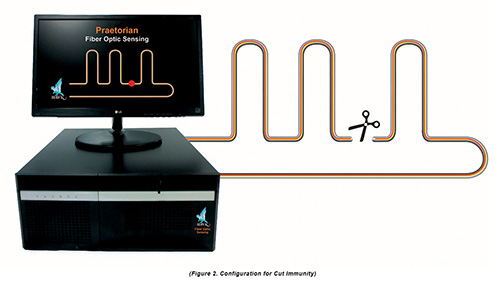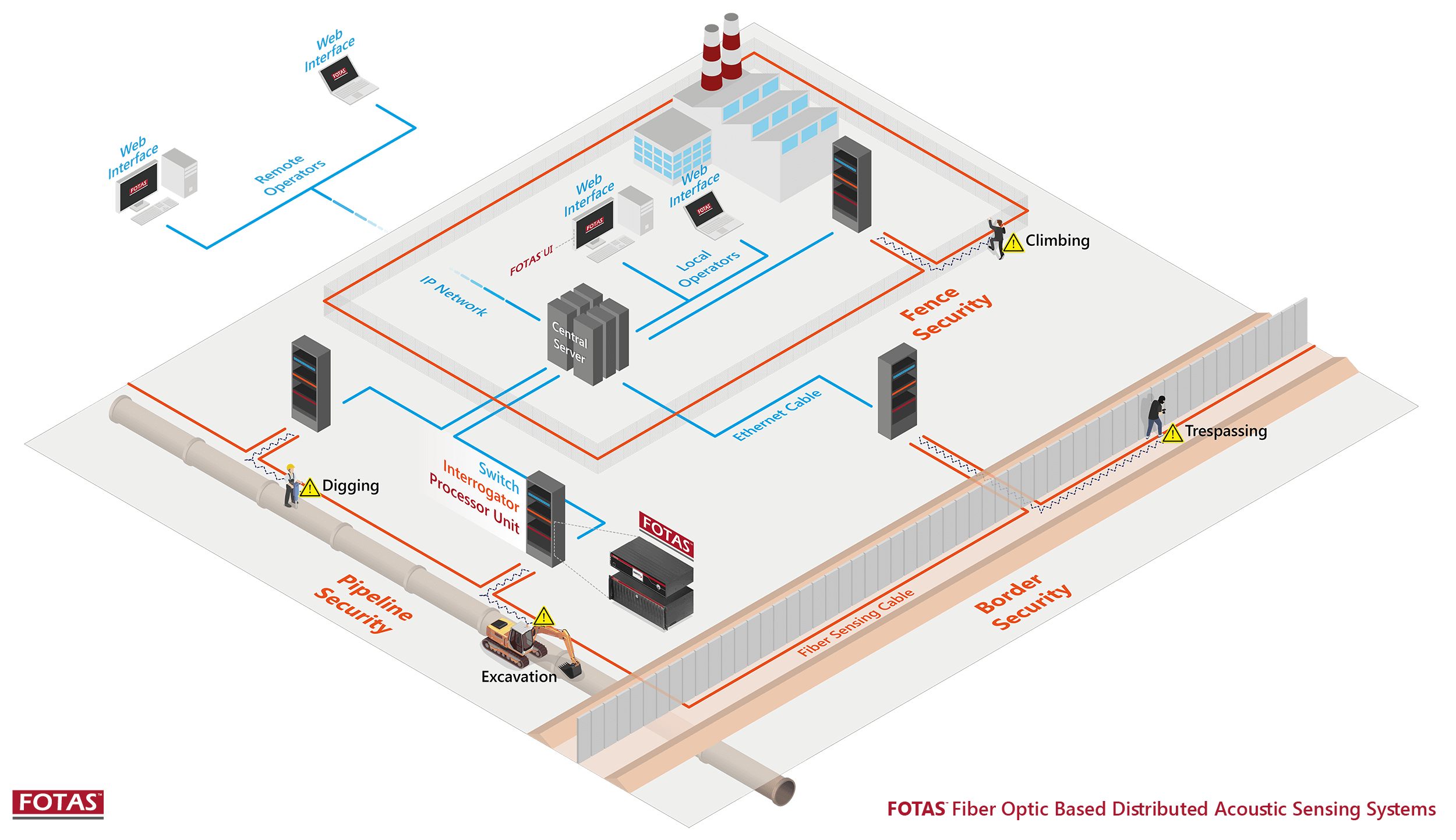Enhance Your Safety With Advanced Fiber Optic Security Systems
In an age where protection is critical, sophisticated fiber optic safety and security systems present an engaging remedy for enhancing security throughout different atmospheres. These systems not just boast exceptional bandwidth and speed for high-resolution surveillance however also provide impressive resilience against exterior disturbances. As companies significantly seek reliable ways to safeguard their possessions, the integration of cutting-edge modern technologies like AI and IoT within fiber optic frameworks increases necessary questions concerning their performance compared to traditional systems. What implications do these developments hold for future safety and security steps?
Benefits of Fiber Optic Safety And Security
Harnessing the advantages of fiber optic modern technology considerably improves security systems across various applications. One of the primary benefits is the enhanced bandwidth ability, enabling the transmission of large amounts of data at broadband. This is specifically important for real-time video clip monitoring, where high-resolution feeds can be sent out without latency, making sure immediate response abilities.
Furthermore, fiber optics show remarkable resistance to electromagnetic disturbance, which is vital in environments with possible signal interruptions. This dependability ensures consistent performance in essential security operations. Fiber optic wires are less prone to touching and unauthorized access compared to standard copper circuitry, therefore enhancing data stability and discretion.
An additional noteworthy advantage is the resilience of fiber optic systems; they are much more immune to ecological aspects such as moisture, temperature variations, and harsh materials. This resilience converts to decrease upkeep costs and longer lifespans for safety installations.
Last but not least, the lightweight nature of fiber optic cables helps with easier installment and transmitting, especially in intricate frameworks (fiber optic security system). Ultimately, the assimilation of fiber optic technology into safety systems not only bolsters protection measures however also enhances functional efficiency
Secret Functions to Take Into Consideration
When evaluating fiber optic protection systems, a number of vital attributes should be thought about to make sure optimal efficiency and performance. Examine the system's discovery array and sensitivity; a comprehensive variety permits for keeping track of large locations, while high level of sensitivity makes certain that even minor disturbances are detected immediately.
Next, take into consideration the combination abilities of the system. A fiber optic safety and security system should seamlessly user interface with existing safety steps such as cams and alarm systems, producing a natural protection network.
Durability and ecological resistance are likewise essential features. Make sure that the system is made to endure severe climate condition and possible physical risks, as this will prolong its functional life expectancy.

Lastly, explore the scalability of the system. A durable fiber optic safety system need to be conveniently expanding to fit future demands without significant overhauls. By meticulously taking into consideration these features, you can select a fiber optic safety remedy that improves safety and security and protection in your atmosphere.
Setup Refine Summary
To effectively carry out a fiber optic safety system, a methodical installment procedure is essential. This process begins with a comprehensive site analysis to establish the specific safety needs and to recognize ideal places for fiber optic cable televisions and protection gadgets. Following this evaluation, the setup group will establish an in-depth strategy, including cable pathways, required tools, and compliance with neighborhood guidelines.
Next, the installation entails laying the fiber optic cable televisions, guaranteeing they are secured from environmental aspects and physical damages. visit our website Proper handling strategies are essential, as fiber optic cables are sensitive and can be conveniently harmed. After the cabling is mounted, adapters and discontinuations are diligently finished to make sure signal integrity.
The succeeding stage includes installing protection tools such as video cameras, activity detectors, and alarm system systems, all integrated with the fiber optic network. Strenuous testing is carried out to confirm that all elements are working properly and to make sure optimal efficiency.

Comparing Fiber Optic to Typical Systems
The development of protection technology has led to substantial advancements in the contrast in between fiber optic systems and conventional copper-based systems. Fiber optic systems utilize light to transmit data, supplying superior transmission capacity and rate contrasted to their copper counterparts. This leads to boosted information transmission capabilities, making optical fiber excellent for high-resolution video monitoring and real-time monitoring.
Furthermore, fiber optic cable televisions are resistant to electromagnetic interference, reducing the probability of signal deterioration brought on by outside elements. This particular guarantees regular efficiency, also in tough environments. In comparison, traditional copper systems are much more vulnerable to disturbance, bring about prospective susceptabilities in safety applications.
Durability is an additional benefit of fiber optic systems. They are much less prone to harm from environmental elements such as dampness and temperature variations, which can endanger copper circuitry. Fiber optics are lighter and thinner, permitting for less complicated installation and minimized physical footprint.
However, typical systems tend to have reduced preliminary costs, making them eye-catching for budget-conscious projects. While fiber optic systems may need a greater upfront investment, their long-lasting benefits-- such as lower upkeep prices and better dependability-- often outweigh the preliminary cost, positioning them as a superior choice for contemporary safety requirements.
Future Patterns in Safety Modern Technology
Arising patterns in safety modern technology are positioned to change the landscape of surveillance and risk detection - fiber optic security system. As companies progressively encounter advanced risks, advancements such as fabricated knowledge (AI) and artificial intelligence (ML) are coming to be essential to safety systems. These innovations improve the capacity of fiber optic systems by enabling real-time data analysis, recognizing anomalies, and automating actions to prospective breaches
Additionally, the integration of the Web of Things (IoT) is transforming safety and security structures. IoT tools can give detailed situational understanding and help with smooth communication in between various security elements. This interconnectedness permits a lot more efficient surveillance and faster incident feedback times.
Biometric verification is also acquiring energy, offering a greater level of protection through see this one-of-a-kind physical attributes. As this technology progresses, it is most likely to be included right into fiber optic systems for improved access control.
Verdict
In final click over here now thought, progressed fiber optic safety and security systems stand for a considerable development in safety and monitoring modern technology. The shift from standard systems to fiber optic remedies reflects a growing trend towards extra efficient and efficient protection measures in an increasingly complicated technological landscape.